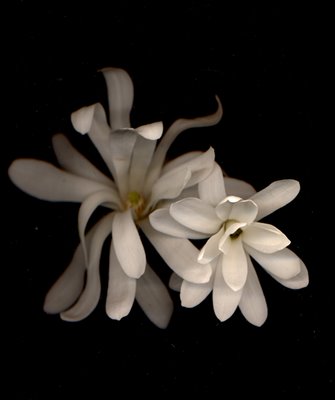
Many plants in our spring garden are too small to really notice unless you know about them. Such is the case of the epimediums. At this time of the year we cut off last year's leaves while having to be careful not to cut off the fresh new stems with the little flowers. I am so used to seeing the forsythia's Yellow Cab yellow flowers that my only connection is the knowledge that I should have pruned my roses by now. In many gardening circles the flowering of the forsythia is a rose pruning indicator.
The rhodos are difficult to ignore at this time of the year, particularly my early blooming ones like Rhododendron augustinii, Rhododendron racemosum and a new one I purchased last year at the VanDusen plant sale, Rhododendron williamsianum.
The four camellias are in bloom, Camelia japonica (a white one and a hot pink one), Camellia x williamsii ‘Donation’ and Camellia x williamsii 'Aunt Mavis'.
But it is our Magnolia stellata with its startling cool white flowers that I cannot but notice and feel that spring is really here. The small tree is by our kitchen bed and it replaced a dead Lawson Cypress about 15 years ago. I found it espaliered against a wall in a nearby house (Hudson and 43d) that was about to be demolished. I obtained permission from the developer to bring it home and it has flourished since.
Magnolia stellata unlike many magnolias is not fragrant. Some 10 years ago I planted a Magnolia grandiflora also called the Southern Magnolia. It's huge and also white flowers bloom later in spring and their scent must be proof that if heaven does not happen to exist "up there" it exists right here. But magnolias are like cats and babies and they don't perform on demand. My grandiflora has yet to bloom. The hope that it might is what makes gardening so exciting.






